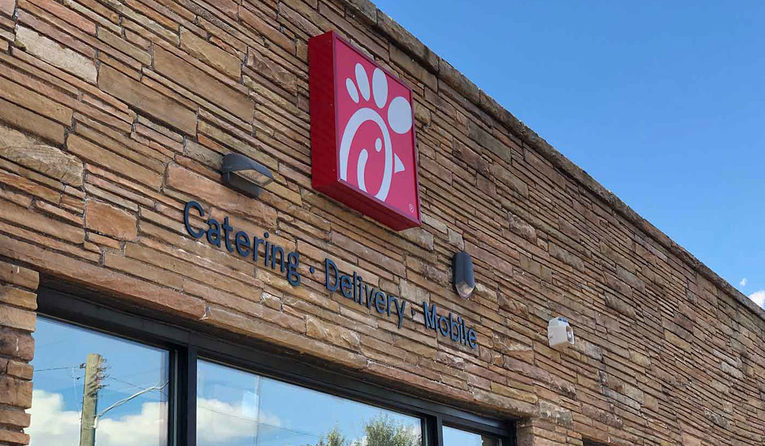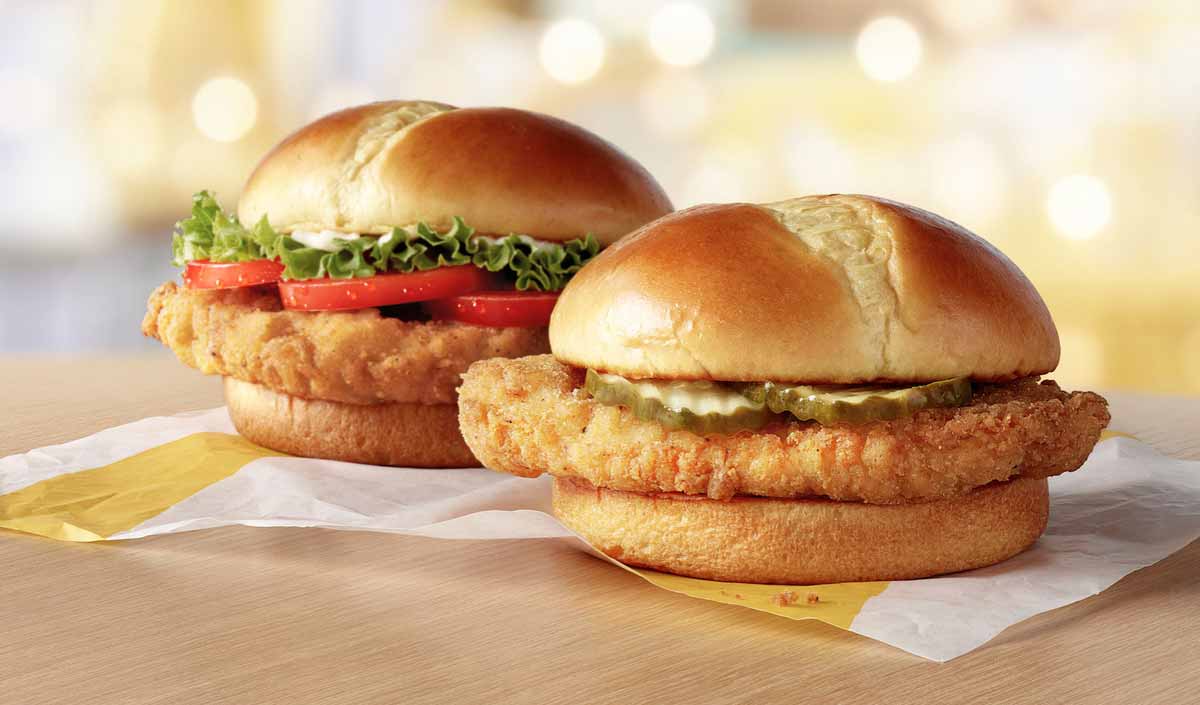It’s a question that has surfaced often over the last few months. Where has McDonald’s been in the chicken sandwich wars? It appears franchisees are asking corporate the same thing, according to data compiled by Kalinowski Equity Research.
One franchisee called the opportunity “tremendous,” saying, “We have to get a sandwich that matches our competitors’ taste and quality.”
Another was blunter. “We should shamelessly copy Popeyes’ excellent sandwich,” they noted.
As we know by now, Popeyes’ Chicken Sandwich was a marketing phenomenon. It translated into transactions, too, as the chain’s same-store sales exploded 10.2 percent, year-over-year, in the third quarter—its best result in two decades.
READ MORE:
How big of a deal was Popeyes’ chicken sandwich really?
McDonald’s is getting even more serious about tech, and everybody should take notice
Naturally, McDonald’s franchisees want in on the action. “They lack a truly high-quality chicken sandwich to compete with Chick-fil-A, which is McDonald’s most important competitive threat in the U.S.,” Mark Kalinowski, chief executive of the research firm, said in the report, which polls 20–30 operators and dates back to 2003, per MarketWatch.
McDonald’s got the memo. The chain said January 28 in a release that it’s “testing a Crispy Chicken Sandwich that just might blow your mind.”
“Our customers had a craving,” the company said. “And McDonald’s owner operators flagged it. They knew that McDonald’s current chicken menu items—from the McChicken Sandwich to McNuggets—are fan favorites across the U.S. But they also knew that their customers were searching for a certain type of chicken sandwich.”
The Crispy Chicken Sandwich tested in two markets (Knoxville, Tennessee; and Houston). Developed by Chad Schafer, the fast-food chain’s senior director of culinary, the Crispy Chicken and Crispy Chicken Deluxe Sandwiches feature a fried chicken filet served on a buttery potato roll, with butter and pickles on top. The deluxe option adds tomatoes, lettuce, and mayo. When first unveiled, McDonald’s said the pilot would run through late January.
“This test was a side-by-side development,” Schafer said in a statement. “Owner operators and suppliers were in the test kitchens with the culinary team—every step of the way. The owner operators were key in gleaning customer insight and our suppliers made sure that quality was top of mind in every conversation.”
McDonald’s franchisees are putting a lot of stake in the product, especially as Chick-fil-A barrels forward. “The real question is, can we compete with Chick-fil-A? I don’t think so,” one franchisee said in Kalinowski’s report.

The report added Chick-fil-A’s expansion shows no signs of letting up. It spotlighted whitespace in the Midwest and Northeast, saying growth “is likely to remain robust for years to come.”
Chick-fil-A has nearly doubled its U.S. store count in the last 12 years, hitting 2,400 units and $10 billion in total systemwide sales by year-end 2018. And its chicken sandwich hasn’t changed since the brand debuted 53 years ago in Atlanta.
For comparison, McDonald’s closed 2018 with 13,914 domestic units, a decline of 122 year-over-year. Nearly all (13,229) were franchised as the brand pushed (in millions), $38,524.05 in total systemwide sales. Average-unit volume was $2.769 million. Chick-fil-A’s stores reported $4.167 million per location.
What’s interesting to note as well is the fact Chick-fil-A ended 2018 as one of only five restaurant brands in America with at least $10 billion in total U.S. systemwide sales—McDonald’s, Starbucks, Subway, and Taco Bell (Wendy’s and Burger King were knocking at the door) were the others.
And that’s with just 2,400 restaurants, all closed on Sundays. Starbucks had 14,825 locations; Subway 24,798; and Taco Bell 6,588.
So, it’s understandable McDonald’s franchisees tagged Chick-fil-A as the company’s biggest threat to market share. Respondents in Kalinowski’s survey didn’t list a single burger chain. An eye-opening 89 percent picked Chick-fil-A as the brand’s top rival.
As far as Popeyes goes, Kalinowski said the chain could grow by half and still only gain 0.9 percent in market share, being the 20th largest quick-serve on the landscape at 2,368 restaurants and systemwide sales (in millions) of $3,325.00. “So although Popeyes is to be applauded for its massive chicken sandwich success, that success—in context—suggests minimal/immaterial competitive impact on McDonald’s,” the report said. Eleven percent of franchisees in the survey picked Popeyes as McDonald’s biggest challenger, however, proving just how deep this chicken sandwich conversation runs.
Adam Werner, co-leader of the restaurant, hospitality, and leisure practice at AlixPartners, told MarketWatch that McDonald’s needs to jump into poultry battle. “McDonald’s competitors are forcing change and forcing McDonald’s to keep up,” he said.
According to reports from Bloomberg, the pressure pushed McDonald’s to use the flavor enhancer MSG in its new Crispy Chicken sandwiches.
The chain told Yahoo Finance in response, “We are always listening to our customers regarding our menu offerings. So far, our customers in Houston and Knoxville have had a positive response to the test of our Crispy Chicken Sandwich and Deluxe Crispy Chicken sandwich. Feedback and insights from the test will inform our decisions moving forward.”
The FDA has labeled MSG safe, despite its controversial history. Popeyes and Chick-fil-A use MSG in their chicken sandwiches. McDonald’s doesn’t feature the ingredient on its national menu.
The chicken activity precedes McDonald’s fourth-quarter earnings, set for Wednesday. The company is coming off a period where global same-store sales lifted 5.9 percent, year-over-year, beating experts’ 5.6 percent prediction. Net income dropped 2 percent to $1.6 billion.
McDonald’s also grew U.S. comps a solid 4.8 percent, although it was comprised of a “healthy average check increase,” driven by product mix changes (two-thirds) and menu pricing (one-third as domestic pricing was up nearly 3 percent), and not traffic.
Will menu innovation play a larger role in 2020? SunTrust Robinson Humphrey analysts believe so, pointing to the Bacon BBQ Burger release in early December and the chicken sandwich push.
Additionally, McDonald’s announced Tuesday that it’s adding Chicken McGriddles and a McChicken Biscuit breakfast sandwich to its early offerings for the first time (both are LTOs). “McDonald’s is committed to remaining a leader in the quick-service breakfast category through our delicious offerings, consistent menu innovation, and a faster drive-thru experience,” Linda VanGosen, VP of menu innovation, said in a statement.

On that latter note, McDonald’s said a strategic focus on drive-thru service this past year decreased wait times by an average of 20 seconds across all dayparts. Breakfast customers also enjoyed their fastest drive-thru experience in more than two years.
Outside of chicken, McDonald’s is testing a Beyond Meat plant-based burger in Canada currently. In January, the company said it expanded the “P.L.T.” trial to include 52 restaurants in Southwestern Ontario. “We gathered a lot of feedback in the initial test about what people like about the P.L.T.,” Michaela Charette, head of consumer insights, McDonald’s Canada, said at the time. “As we expand the test, we’re continuing to listen to our guests across Southwestern Ontario and assess the appetite for a plant-based alternative within the McDonald’s menu.”
Yet, as MarketWatch noted, many analysts remain in wait-and-see mode given McDonald’s executive change in November, with Chris Kempczinski stepping in for an ousted Steve Easterbrook. Joe Erlinger is also now heading up the U.S. business.
Oppenheimer analysts wrote McDonald’s will probably stick to current directives near-term. That means technology-fueled initiatives that focus on leveraging customer data. The chain said in January it created a new, dedicated “digital customer engagement” team spearheaded by Lucy Brady in a newly created role of chief digital customer engagement officer. McDonald’s new cross-functional digital team will direct global digital efforts, including ordering, personalization payments, loyalty, and delivery.








